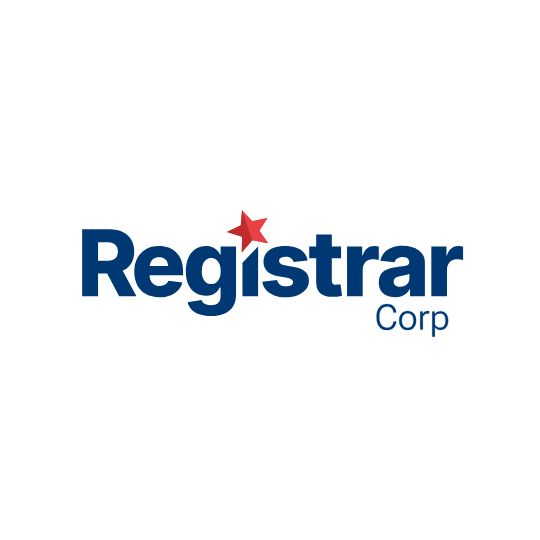In the ever-changing world of cosmetics, ensuring product safety and quality is essential. Consumers trust that the products they use are not only effective but also safe. Central to maintaining cosmetics quality is ISO 22716, the internationally recognized Good Manufacturing Practices (GMP) guideline for cosmetics production. This standard outlines best practices for manufacturing, raw materials, quality control, documentation, storage, and distribution to help ensure that cosmetic products meet global safety and regulatory requirements.
One of the most critical components of ISO 22716 compliance is raw material management. The selection, testing, storage, and traceability of raw materials directly impact product safety, quality, and consumer confidence. Contaminated, improperly stored, or incorrectly labeled raw materials can introduce microbial, chemical, or physical hazards, leading to product recalls, legal liabilities, and damage to brand reputation.
To mitigate these risks, ISO 22716 establishes strict guidelines for how raw materials are handled throughout the production cycle. These include:
- Supplier qualification and evaluation to ensure raw material sources meet GMP standards.
- Quality control testing to verify that materials comply with physical, chemical, and microbiological specifications.
- Proper receiving procedures and documentation to maintain traceability.
- Storage and handling protocols to prevent contamination and degradation.
- Batch tracking and deviation management to identify and correct quality issues.
By implementing robust raw material management practices, cosmetic manufacturers can reduce contamination risks, improve production efficiency, and maintain compliance with both ISO 22716 and regulatory authorities such as the U.S. FDA, EU Commission, and Health Canada.
In the following sections, we’ll explore the specific requirements of ISO 22716 regarding raw materials, best practices for compliance, and how companies can streamline their GMP compliance with Registrar Corp’s expert guidance and software solutions.
Understanding Raw Materials Under ISO 22716
In cosmetic manufacturing, raw materials refer to any substances used in the formulation of a finished product, including active ingredients, excipients, preservatives, emulsifiers, colorants, and fragrances. These materials are the foundation of product quality and safety, making their proper selection, handling, and testing a critical aspect of ISO 22716 compliance.
How ISO 22716 Ensures Consistency and Quality in Raw Material Sourcing
ISO 22716 establishes strict guidelines for the sourcing, verification, and handling of raw materials to ensure uniformity, reliability, and compliance with regulatory requirements. This includes:
- Supplier Qualification and Evaluation: Manufacturers must source raw materials from approved suppliers who meet predefined quality standards. Supplier audits and certifications help verify that raw materials consistently meet regulatory and GMP requirements.
- Defined Quality Standards: Raw materials must adhere to specific physical, chemical, and microbiological parameters to ensure they do not introduce safety risks into the final product.
- Controlled Procurement and Receiving Procedures: Every raw material batch must be carefully inspected, tested, and documented before being approved for use in production.
By implementing robust supplier controls and quality assurance protocols, ISO 22716 ensures that only safe and high-quality raw materials enter the production process.
The Connection Between Raw Material Quality and Final Product Safety
Raw material quality directly impacts the stability, effectiveness, and safety of the final cosmetic product. Poorly managed raw materials can lead to:
- Microbial Contamination – Improperly stored or contaminated raw materials can introduce bacteria, mold, or yeast, leading to spoiled or unsafe products.
- Chemical Instability – Variations in raw material quality can cause formula degradation, separation, or unexpected chemical reactions, affecting product performance and shelf life.
- Regulatory Non-Compliance – If raw materials fail to meet ISO 22716 or regulatory safety standards, the finished product may be rejected during audits or inspections, leading to product recalls and legal penalties.
To prevent these risks, ISO 22716 mandates comprehensive control measures, ensuring that raw materials maintain their intended properties from sourcing to final use. By enforcing consistent quality control and documentation, manufacturers can ensure safer, more reliable products that meet global GMP expectations.
In the next section, we’ll explore the specific ISO 22716 requirements for raw material compliance, including testing, traceability, and storage best practices.
Key Requirements for Raw Material Compliance Under ISO 22716
To ensure cosmetic product safety and regulatory compliance, ISO 22716 sets strict guidelines for raw material management. These requirements focus on quality assurance, supplier evaluation, testing, storage, traceability, and deviation management—all crucial elements in maintaining GMP compliance and product integrity.
Strict Quality Criteria: Physical, Chemical, and Microbiological Requirements
Every raw material used in cosmetic manufacturing must meet predefined acceptance criteria to ensure consistency, safety, and performance. ISO 22716 mandates that raw materials undergo quality control checks based on:
- Physical properties (appearance, color, odor, viscosity).
- Chemical composition (pH levels, ingredient concentration, stability).
- Microbiological quality (absence of harmful bacteria, mold, or yeast).
Failure to meet these criteria can result in product instability, contamination risks, or regulatory non-compliance, making thorough testing and verification essential before raw materials are used in production.
Supplier Evaluation: Ensuring GMP-Compliant Sourcing
ISO 22716 requires rigorous supplier evaluation processes to ensure that raw materials are sourced from high-quality, GMP-compliant manufacturers. Companies must:
- Assess suppliers based on their GMP certification, regulatory compliance, and track record.
- Conduct regular audits to verify raw material consistency and adherence to safety standards.
- Establish approved supplier lists to prevent sourcing from unverified sources.
This step minimizes the risk of contamination, fraud, or variations that could compromise final product safety and regulatory compliance.
Receiving Inspections: Ensuring Raw Materials Meet Specifications Upon Arrival
Each batch of raw materials must be inspected upon receipt to verify compliance with approved specifications. This includes:
- Visual inspections to check for contamination, damage, or labeling discrepancies.
- Documentation review to ensure materials match purchase orders and supplier specifications.
- Sampling and testing (when required) before acceptance into production.
By implementing systematic receiving inspections, manufacturers can prevent defective materials from entering the production process, reducing the risk of waste, recalls, and safety concerns.
Testing and Analysis: Verifying Raw Material Compliance Before Production
Before raw materials are approved for use, ISO 22716 requires batch-specific testing to confirm they meet predefined safety and quality parameters. This process includes:
- Chemical analysis to verify ingredient composition and stability.
- Microbial testing to detect harmful pathogens or microorganisms.
- Physical testing to confirm texture, solubility, or color consistency.
Once testing is complete, only raw materials that pass all required checks are released for production. Any materials that fail must be quarantined and properly documented as non-compliant.
Storage and Handling Best Practices: Preventing Contamination and Degradation
ISO 22716 emphasizes that raw materials must be stored under controlled conditions to preserve quality and prevent contamination. Proper storage practices can include:
- Temperature and humidity control to maintain stability.
- Designated storage areas for different types of materials (e.g., liquids vs. powders, hazardous vs. non-hazardous).
- Clear labeling and segregation to avoid mix-ups and cross-contamination.
Strict storage and handling protocols ensure that raw materials retain their integrity throughout their shelf life, reducing waste and maintaining compliance.
Batch Traceability: Supporting Recall Management and Quality Control
Every batch of raw materials must be clearly identified, documented, and tracked throughout the manufacturing process. ISO 22716 mandates that companies implement batch traceability systems, which:
- Assign unique batch numbers to every raw material shipment.
- Maintain detailed records of usage, test results, and supplier information.
- Enable rapid traceability in the event of a recall or contamination issue.
With robust traceability, manufacturers can quickly identify affected products, isolate risks, and prevent unsafe cosmetics from reaching the market.
Deviation Management: Handling Non-Compliant Raw Materials Effectively
If a raw material fails quality testing or does not meet ISO 22716 standards, manufacturers must follow structured deviation management protocols to:
- Quarantine the non-compliant material and prevent its use.
- Investigate the root cause of the deviation (e.g., supplier error, contamination, or transport issues).
- Document corrective and preventive actions (CAPA) to prevent future occurrences.
- Decide whether to reject, reprocess, or return the material based on risk assessment.
Proper deviation documentation and reporting are essential for regulatory audits and continuous quality improvement.
Ensuring Compliance with ISO 22716
By implementing these raw material management best practices, cosmetic manufacturers can:
- Minimize contamination risks and ensure product safety.
- Strengthen regulatory compliance with ISO 22716 and international GMPs.
- Streamline supply chain efficiency and reduce material waste.
- Enhance audit readiness with proper documentation and traceability.
With strict compliance requirements in place, proper documentation is what ties these processes together. Without well-maintained records, even the most rigorous supplier checks, testing protocols, and storage controls can fall short during an audit. In the next section, we’ll explore how documentation plays a crucial role in raw material management and ISO 22716 compliance.
How Strong Documentation For Raw Materials Prevents ISO 22716 Compliance Failures
Accurate and comprehensive documentation is a cornerstone of ISO 22716 compliance. Proper record-keeping not only ensures traceability, consistency, and accountability in raw material management but also plays a crucial role in regulatory inspections, audits, and overall product safety. Failing to maintain detailed records can result in compliance issues, product recalls, and legal penalties, making robust documentation an essential part of Good Manufacturing Practices (GMP) for cosmetics.
Key Documents Required for Raw Material Compliance
To align with ISO 22716 guidelines, manufacturers must maintain a detailed record-keeping system that includes the following documents:
1. Supplier Qualification Records
Maintaining a reliable supplier network is essential for long-term GMP compliance. Periodic evaluations, audits, and quality agreements help ensure ongoing supplier adherence to ISO 22716 standards. Supplier documentation should include:
- Approved supplier lists and qualification reports.
- Supplier audits and certifications verifying GMP compliance.
- Quality agreements and contractual obligations outlining raw material standards.
- Records of supplier performance evaluations and any corrective actions taken.
By maintaining clear supplier qualification records, manufacturers can verify the consistency and safety of their raw material sources.
2. Raw Material Specifications and Test Results
Each raw material must meet predefined specifications before being used in production. Documentation should include:
- Material specification sheets detailing physical, chemical, and microbiological parameters.
- Certificates of analysis (CoA) from suppliers confirming quality standards.
- In-house testing results from quality control inspections.
- Retained samples and associated records for future reference.
Maintaining detailed specifications and testing records ensures only compliant materials enter the manufacturing process, reducing the risk of contamination or formula inconsistencies.
3. Storage and Handling Logs
Proper storage conditions are crucial for preserving raw material integrity and preventing degradation. Storage documentation should include:
- Warehouse and storage area conditions (temperature, humidity, contamination controls).
- Inventory tracking logs showing movement, usage, and expiration dates.
- First-In, First-Out (FIFO) records ensuring older stock is used first.
- Cleaning and maintenance logs for storage areas.
ISO 22716 requires that raw materials be stored in designated areas with appropriate separation and environmental controls, making detailed logs essential for audit readiness.
4. Deviation Reports and Corrective Actions
If a raw material batch fails testing or does not meet specifications, manufacturers must follow structured deviation management procedures. Required documentation includes:
- Deviation reports outlining the issue (e.g., contamination, labeling error, quality failure).
- Investigation records identifying root causes and potential supplier issues.
- CAPA documentation detailing resolutions.
- Final disposition records showing whether the material was rejected, reworked, or returned to the supplier.
These records ensure non-compliant materials are properly handled, preventing defective products from entering the supply chain.
How Proper Documentation Streamlines Audits and Regulatory Inspections
Maintaining well-organized documentation simplifies regulatory compliance and ensures audit readiness by:
- Reducing compliance risks: Inspectors and auditors can quickly verify that raw materials meet regulatory requirements.
- Improving traceability: In case of product recalls or safety concerns, batch records provide a clear audit trail.
- Enhancing efficiency: Digital documentation tools streamline record-keeping, tracking, and retrieval.
- Supporting continuous improvement: Reviewing past deviations and corrective actions helps identify trends and optimize processes.
Optimizing Compliance with Digital Documentation Solutions
Traditional paper-based record-keeping can be time-consuming, inefficient, and prone to errors. To enhance compliance, many cosmetic manufacturers are turning to digital solutions, such as Registrar Corp’s Cosmetri GMP software, which offers:
- Automated documentation storage and retrieval for faster audit preparation.
- Real-time inventory tracking to monitor raw material usage and expiration.
- Integrated supplier qualification tools for streamlined vendor management.
- Built-in CAPA workflows to document and resolve deviations efficiently.
By leveraging technology-driven compliance solutions, manufacturers can reduce administrative burden, ensure accurate record-keeping, and strengthen ISO 22716 compliance.
Proactive Compliance Strategies: SOPs, Audits, and Digital Tracking
Ensuring compliance with ISO 22716 in raw material management requires more than just meeting minimum regulatory requirements. Manufacturers must adopt proactive strategies to mitigate risks, maintain product quality, and streamline operations. The most effective approach involves implementing Standard Operating Procedures (SOPs), conducting routine internal audits, training personnel, and leveraging technology to ensure adherence to Good Manufacturing Practices (GMP).
Implementing Standard Operating Procedures (SOPs) for Raw Materials
Establishing clear, well-documented Standard Operating Procedures (SOPs) is a fundamental step in ensuring consistency and quality control in raw material management and the documentation process. These procedures provide a standardized framework for handling, testing, storing, and tracking raw materials.
Key elements of an effective SOP for raw material management include:
- Supplier qualification protocols to ensure raw materials meet predefined GMP requirements before procurement.
- Receiving and inspection procedures for verifying that raw materials conform to safety and quality standards upon arrival.
- Labeling and traceability guidelines to ensure every batch is properly identified and documented.
- Storage and handling requirements to maintain raw material integrity and prevent contamination.
- Deviation and corrective action protocols to manage non-conforming raw materials.
SOPs should be regularly reviewed and updated to reflect changes in regulatory requirements, supplier performance, or internal process improvements. By establishing comprehensive SOPs, manufacturers ensure consistency, reduce the risk of human error, and maintain compliance with ISO 22716.
Conducting Routine Internal Audits to Verify Controls For Raw Materials
Regular internal audits are essential for maintaining compliance with ISO 22716 and identifying areas for improvement in raw material management. These audits provide manufacturers with a structured method for assessing whether their quality control measures, documentation practices, and supplier oversight align with regulatory requirements.
An effective internal audit program should include:
- Scheduled inspections to assess the handling, storage, and traceability of raw materials.
- Evaluation of supplier compliance through periodic reviews of supplier documentation and performance.
- Verification of testing procedures to ensure raw materials meet physical, chemical, and microbiological specifications.
- Review of inventory tracking and batch records to confirm accurate traceability.
- Identification of non-conformances and implementation of corrective actions to address gaps.
Internal audits provide manufacturers with early detection of compliance risks, allowing them to implement corrective actions before issues escalate into regulatory violations or product recalls.
Training Personnel on Proper Handling & Hygiene Protocols For Raw Materials
Employee training is a critical component of GMP compliance. Ensuring that all personnel involved in raw material management understand proper handling, storage, and hygiene protocols reduces the risk of contamination and enhances overall product safety.
A comprehensive training program should cover:
- Personal hygiene standards to prevent contamination during handling.
- Proper use of protective equipment when working with raw materials.
- Receiving and inspection procedures to identify and reject non-compliant materials.
- Storage requirements for maintaining raw material stability.
- Documentation protocols to ensure accurate record-keeping and traceability.
Training should be conducted regularly and updated as necessary to reflect changes in regulations, processes, or identified risks. Competency assessments can be used to ensure employees have retained key compliance knowledge and can effectively apply GMP principles in their daily tasks.
Leveraging Technology and Software Solutions for Compliance Management
Managing compliance manually is labor-intensive, time-consuming, and prone to errors. Many cosmetic manufacturers are now integrating digital compliance management systems to streamline documentation, track raw material usage, and enhance traceability.
Key benefits of implementing compliance management software include:
- Automated record-keeping, eliminating the need for manual documentation.
- Real-time inventory tracking, ensuring raw materials are properly labeled, stored, and used before expiration.
- Batch traceability systems, allowing manufacturers to quickly identify and isolate materials in case of a recall.
- Corrective and preventive action tracking, documenting deviations and compliance issues.
By utilizing technology-driven compliance solutions, manufacturers can improve operational efficiency, reduce compliance risks, and ensure ISO 22716 adherence with minimal disruption to production.
Strengthening Compliance Through Proactive Risk Management
Ensuring compliance with ISO 22716 in raw material management requires a systematic and proactive approach. By implementing structured SOPs, conducting internal audits, training personnel, and leveraging technology, manufacturers can:
- Minimize the risk of contamination and non-compliance.
- Improve raw material traceability and audit readiness.
- Reduce production errors and quality control failures.
- Maintain consumer confidence and regulatory compliance.
In the next section, we’ll explore how Registrar Corp provides expert solutions to help manufacturers streamline ISO 22716 compliance, from training programs to compliance software solutions designed to enhance efficiency and ensure GMP adherence.
Simplifying Compliance with Registrar Corp’s Expertise
Managing raw material compliance under ISO 22716 can be overwhelming. From supplier verification and testing to batch traceability and deviation handling, every step must meet strict regulatory requirements. Without a streamlined approach, manufacturers risk compliance failures, costly recalls, and production delays.
That’s where Registrar Corp comes in.
- Our ISO 22716 consulting services help manufacturers establish GMP-compliant processes.
- Our industry-leading training programs ensure your team understands compliance best practices.
- With Cosmetri GMP Software, you can digitally manage documentation, batch records, and audit readiness with ease.
Take control of your compliance strategy today. Contact Registrar Corp for expert training, consulting, and software solutions that simplify raw material management and ensure audit readiness.









